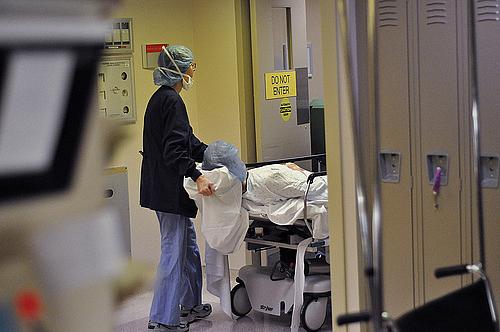Should Medicare Yank Hospital Mistake Data? You Decide

One of the most powerful U.S. government agencies is bungling its public duties.
And I’m not talking about the IRS.
The Centers for Medicare and Medicaid Services won a battle with the hospital industry – not an easy thing to do – and published information on Medicare’s Hospital Compare site in 2010 about eight different “hospital-acquired conditions.” The information gives people the ability to see important information before they decide where to seek care. The conditions include:
Objects accidentally left in the body after surgery
Air bubble in the bloodstream
Mismatched blood types
Severe pressure sores (bed sores)
Falls and injuries
Blood infection from a catheter in a large vein
Infection from a urinary catheter
Signs of uncontrolled blood sugar
The eight conditions are part of the “Readmissions, Complications, and Deaths” section of the site. Other sections examine:
Patients’ Survey
Timely & Effective Care
Outpatient Imaging Efficacy
Medicare Payment
Number of Medicare Patients
Linking Quality to Payment
For the hospital-acquired conditions, Medicare tells people what hospitals have reported as their rate per 1,000 patient discharges for each of these measures. So, for example, you can see that at Benefis Hospital in my hometown of Great Falls, Montana, the rate for objects left in the body is 0 per 1,000, while nationally the rate is an estimated 0.028 per 1,000. In fact, in half of the hospital-acquired condition measures, Benefis is better than the national average. But, on the other half – including catheter infections, the hospital has a rate that is higher than the national average.
It’s that type of comparison that makes hospital executives wring their hands and call their legislators.
Charles R. Babcock with Bloomberg News recently explained part of the reason why hospitals bristle at this data:
The hospital industry argued against adding the statistics to Hospital Compare from the beginning, contending the data, culled from Medicare billing records, aren’t precise enough and can paint inaccurate pictures.
So now, rather abruptly, CMS is changing course. Here’s more from Babcock’s story:
Now the Centers for Medicare and Medicaid Services is planning to strip the site of the eight hospital-acquired conditions, which include infections and mismatched blood transfusions, while it comes up with a different set. The agency said it’s taking the step because some of the eight are redundant and because an advisory panel created by the 2010 Affordable Care Act recommended regulators use other gauges.
Is CMS interested in protecting patients and making sure that taxpayers are getting the best quality care for their considerable investment? There has been a general movement by the agency toward making more information publicly available and – more importantly – presented in such a way to make it useful to the average person. This seems to run completely counter to that movement.
So who is protesting? A rag tag group of poorly funded patient advocacy organizations? No. The proposed change has critics among some of the biggest businesses on the planet. Babcock wrote:
Bill Kramer, executive director for national health policy at the Pacific Business Group on Health, said removing the data “would be a significant step backwards.” The coalition, including Wal-Mart Stores Inc. and Walt Disney Co., was among 33 business, labor and consumer organizations that argued against taking the hospital-acquired conditions, or HACs, off the site.
Having Wal-Mart and Disney on your side certainly helps, but it’s no guarantee that public information will remain public. So what can you do about it?
CMS is soliciting comments about its proposed rule change until June 25. Helen Haskell with Mothers Against Medical Error, has been letting patient advocates know about the comment period.
To comment, go to the entry on the Regulations.gov site for Medicare Programs: Hospital Inpatient Prospective Payment Systems for Acute Care Hospitals and Long Term Care Hospital Prospective Payment System, etc. And, yes, the “etc.” is part of the title.
Once on the page, click on “Comment Now!”
You also can send an old-fashioned letter. Here are the instructions from the proposed rule that CMS published in the Register:
You may mail written comments (one original and two copies) to the following address ONLY:
Centers for Medicare & Medicaid Services
Department of Health and Human Services
Attention: CMS–1599–P
P.O. Box 8011
Baltimore, MD 21244–1850
Please allow sufficient time for mailed comments to be received before the close of the comment period.
Think of it as a doubly good cause because it will help the U.S. Postal Service dig itself out of debt.
And before you get cynical on me and say that CMS is a big government agency that isn’t going to listen to random citizens writing letters, witness this small ray of hope for rapid response.
Early Friday morning, when I put this post together, I visited the proposed rule change site on Regulations.gov and saw a message saying, “Comment Period Closed.”
I was surprised and, after spending quite a bit of time on the site trying to find a different way to comment, I wrote a post saying that CMS wasn’t interested in public comment at all.
But guess what? I wrote the website and in within three hours received a note, saying:
The following changes have been made to this Request: Changed Status to Closed from Open
The door is open. Please use it.
Image by rxb via Flickr

